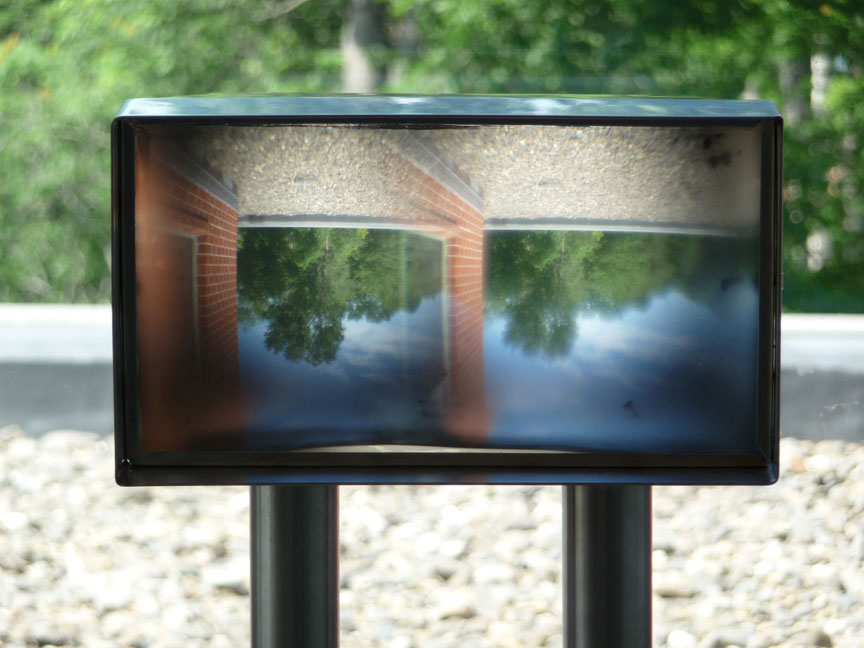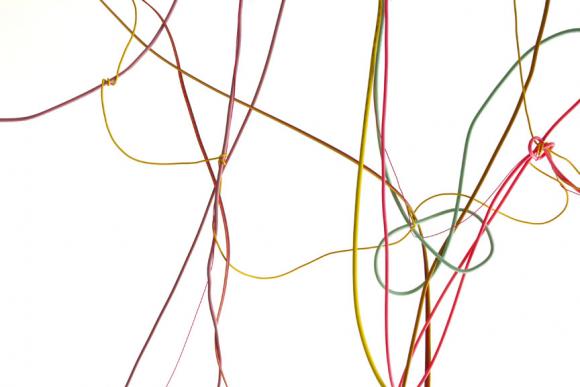PROVIDENCE, R.I. [Brown University] — The Cohen Gallery at the Perry and Marty Granoff Center for the Creative Arts presents its inaugural exhibition, Loop: Works by Julianne Swartz, from Friday, Feb. 4, through Friday, March 18, 2011. An opening event will be held on Friday, Feb. 4, with an artist’s lecture beginning at 5:30 p.m. in the Martinos Auditorium, followed by a reception. The event and the exhibition are free and open to the public.
The Cohen Gallery is located on the first floor of the Granoff Center, Brown’s new interdisciplinary arts center designed by Diller Scofidio + Renfro. The gallery will serve as a site for student experimentation, thematic exhibitions organized by faculty and/or students, exhibitions of work by visiting artists, as well as emerging, established, and almuni artists.
Works presented in this inaugural exhibition include Julianne Swartz’s sound installations and camera-less-video works, as well as a newly commissioned site-specific sculpture that has afforded Swartz the opportunity to explore the Cohen Gallery’s new and unique space.

Loop, an eight-channel soundtrack, is made of electrical wire and speakers. The piece is participatory, as the viewer listens to intimate whispers and hums. Color, form, sound, and function all become an intricate part of the interactive experience. Exploring a predigital world, Swartz’s Camera-Less-Video (2009) works create a paradigm in perspective and an unexpected observation in the morphing of both the internal and external spaces of the gallery. Lenses inside the sculpture box multiply and flip the view outside the windows they face. The image created on the screen is a result of the projection from the light and activity outside.
Swartz often contemplates and examines connectivity, and paradoxically, the interruption of a continuum in her works. Floor to Ceiling investigates the electrical currents and elementary particles that create a magnetic field. Two thin rods of stainless steel — one suspended from the ceiling and the other balanced on the floor — are held together by a magnetic force. A brief interruption in the sculptural line (approximately one inch, calculated to be separated to its maximum capacity while still maintaining a connection) emphasizes that although there is a visible gap in space, the seemingly floating sculpture is demonstrating the strength of its magnetic force in direct opposition to gravity.
Swartz’s works encourage an acknowledgment of our relationship to our body and its surroundings, as well as a contemplation of life cycles, according to exhibition curators Jo-Ann Conklin and Natasha Khandekar. They continue, “With equal importance placed upon negative space - ambient sound, interruptions of sculptural line, and the distance between outside and inside - Swartz presents to us the artistic tools of contemplation, ultimately challenging us to rethink our interpretations of art, object, space, and time.”
The Cohen Gallery is located at 154 Angell St. in Providence. Gallery hours are Wednesday through Friday from 10 a.m. to 4 p.m. For more information, call 401-863-1362. The gallery’s spring exhibitions include Reframing Haiti: Art, History and Performativity and Curating Contemporary Art Practicum.
Julianne Swartz
Swartz has exhibited internationally, including at Tate Liverpool, PS1/MoMA, the SculptureCenter, the New Museum of Contemporary Art, the Jewish Museum, the Indianapolis Museum of Art, Colby College Museum of Art, the Tang Museum, Skidmore College, and the 2004 Biennial Exhibition at the Whitney Museum of American Art.
Upcoming exhibitions include Julianne Swartz, Digital Empathy, a public project at the High Line, New York, spring, 2011; Terrain, a site-specific sound installation at the Museum of Contemporary Art, Cleveland, 2011; Julianne Swartz: How deep is your, a survey exhibition, at the deCordova Sculpture Park and Museum, Massachusetts, scheduled for the fall of 2012.
Swartz is represented by Josée Bienvenu Gallery and Mixed Greens Gallery, both in New York. She teaches sculpture at Bard College and is also on faculty at the School of Visual Arts.

